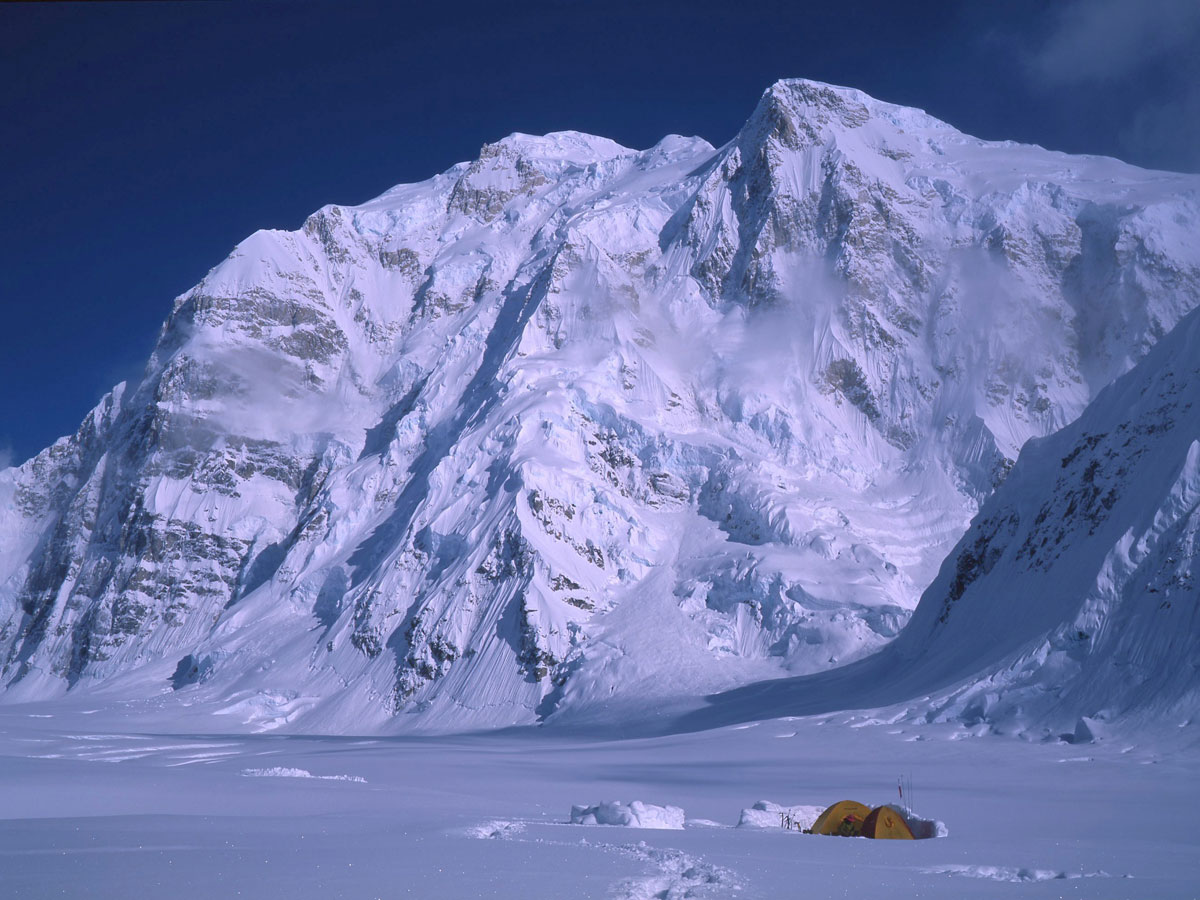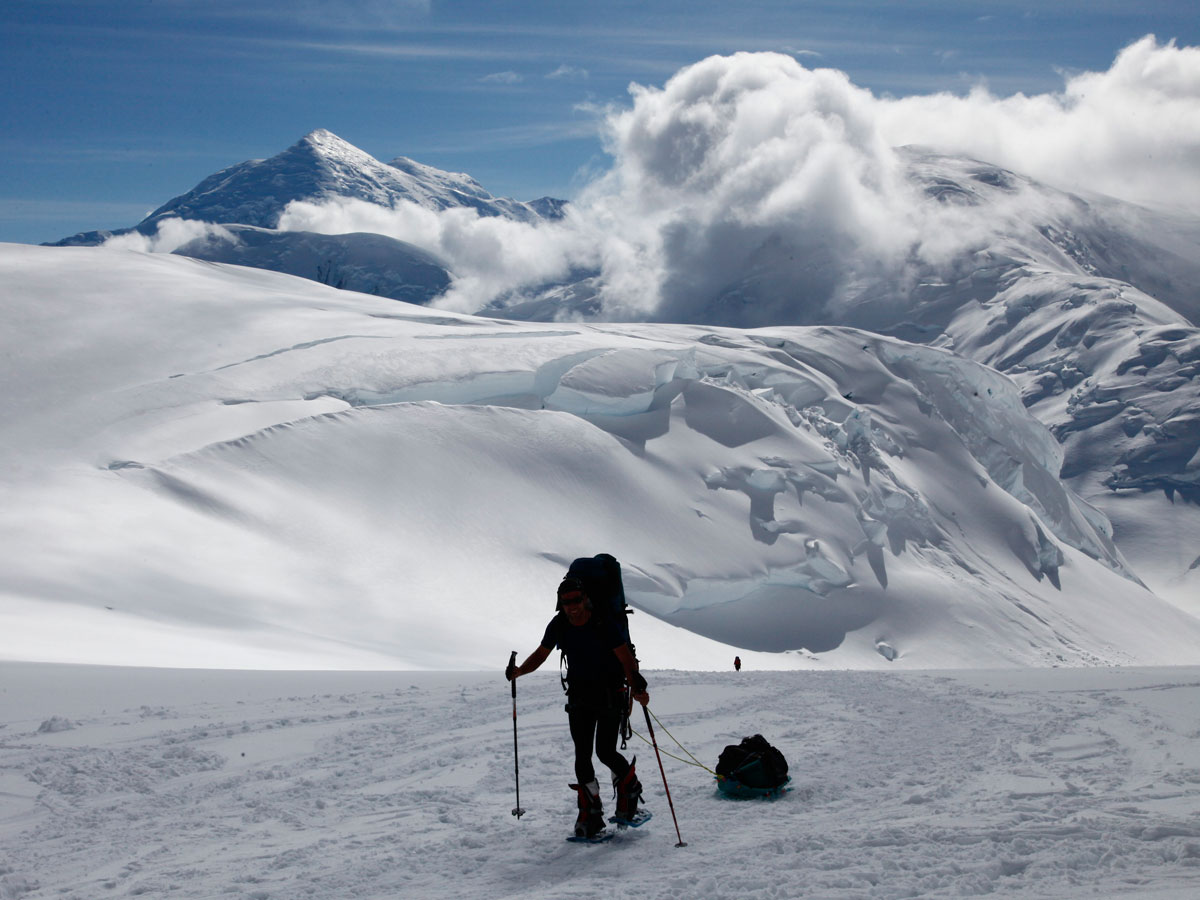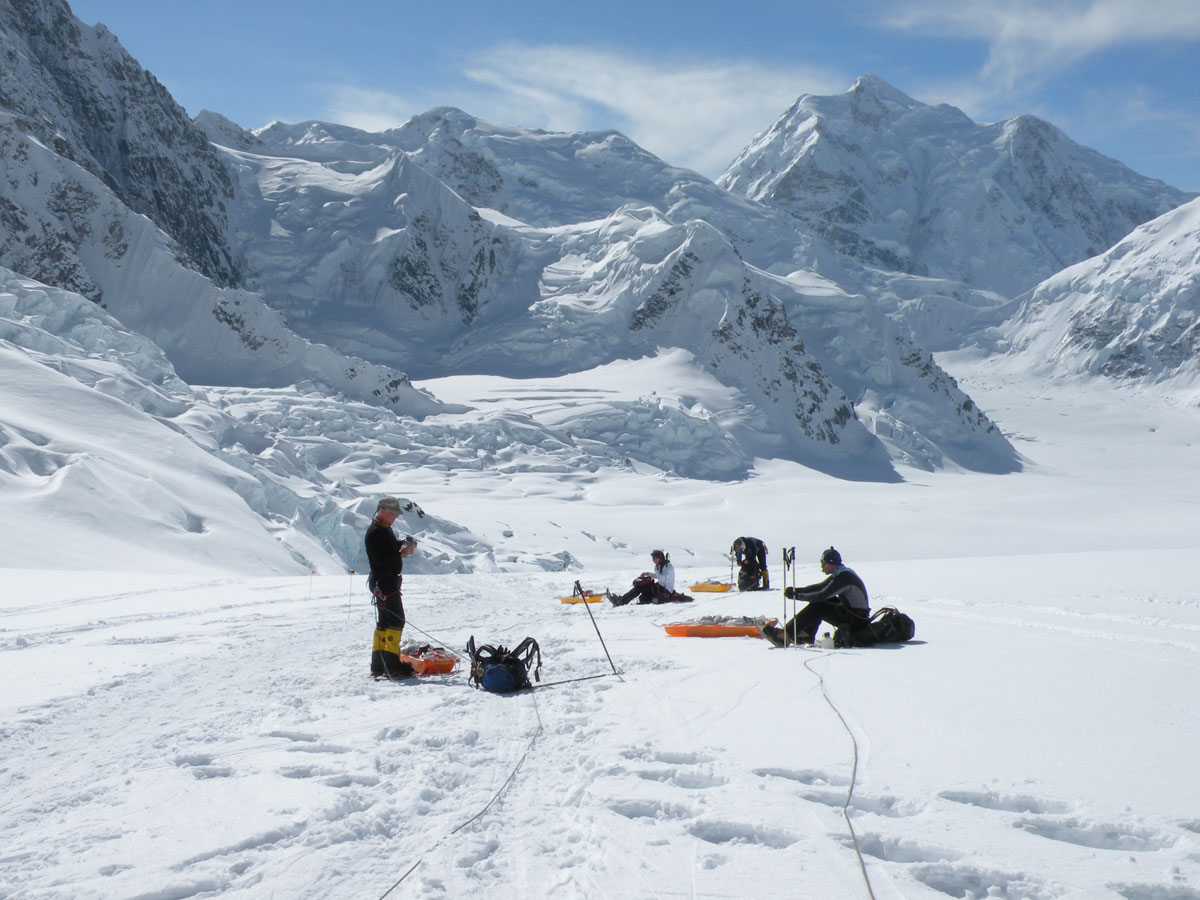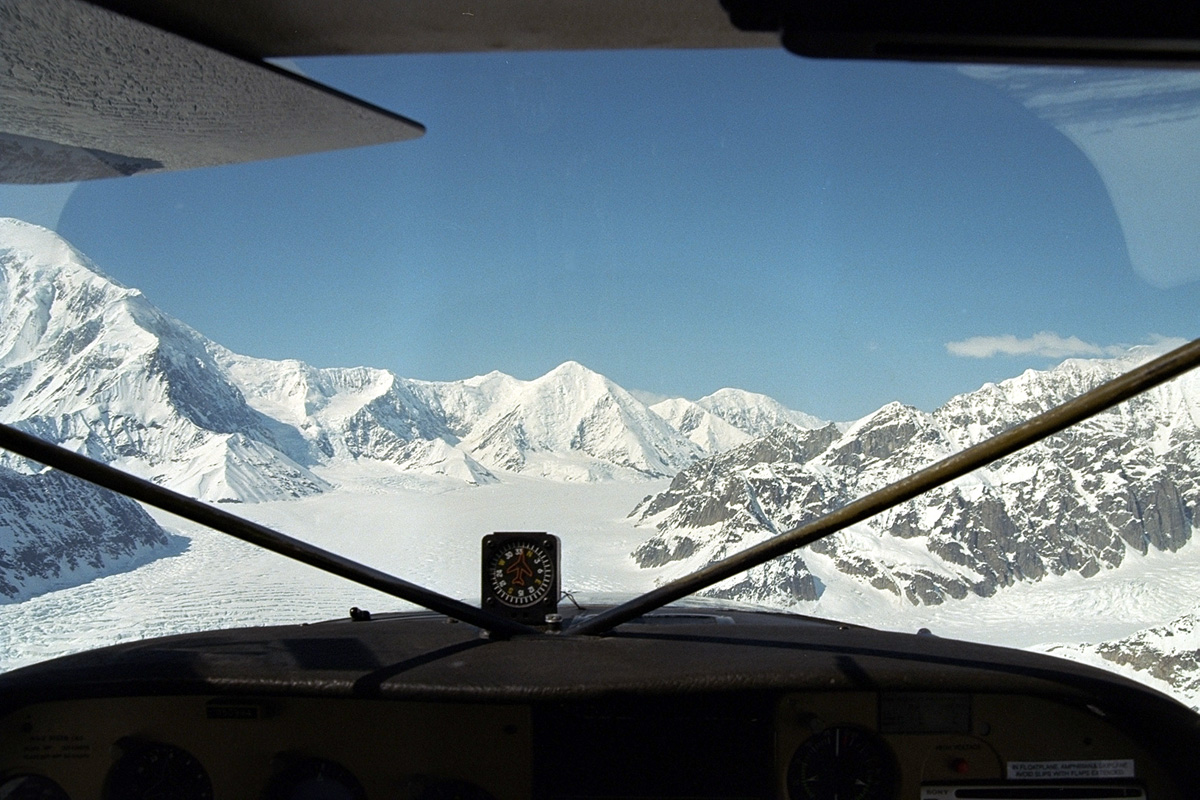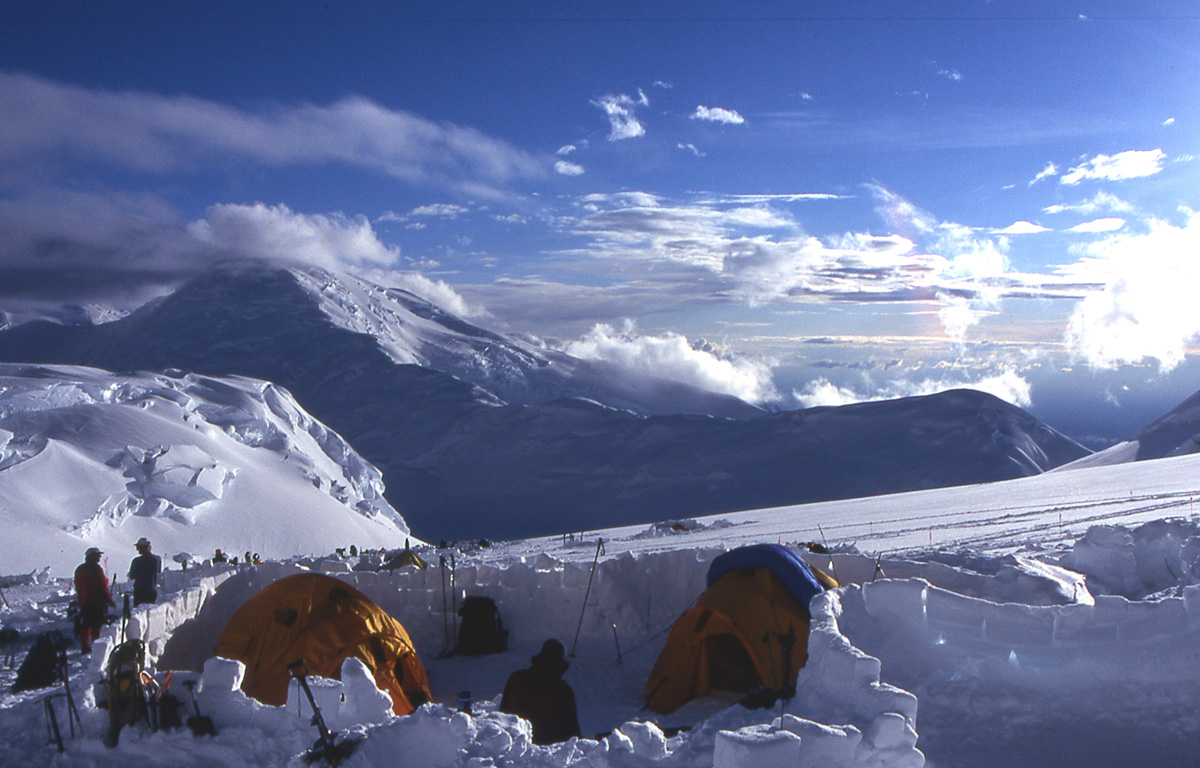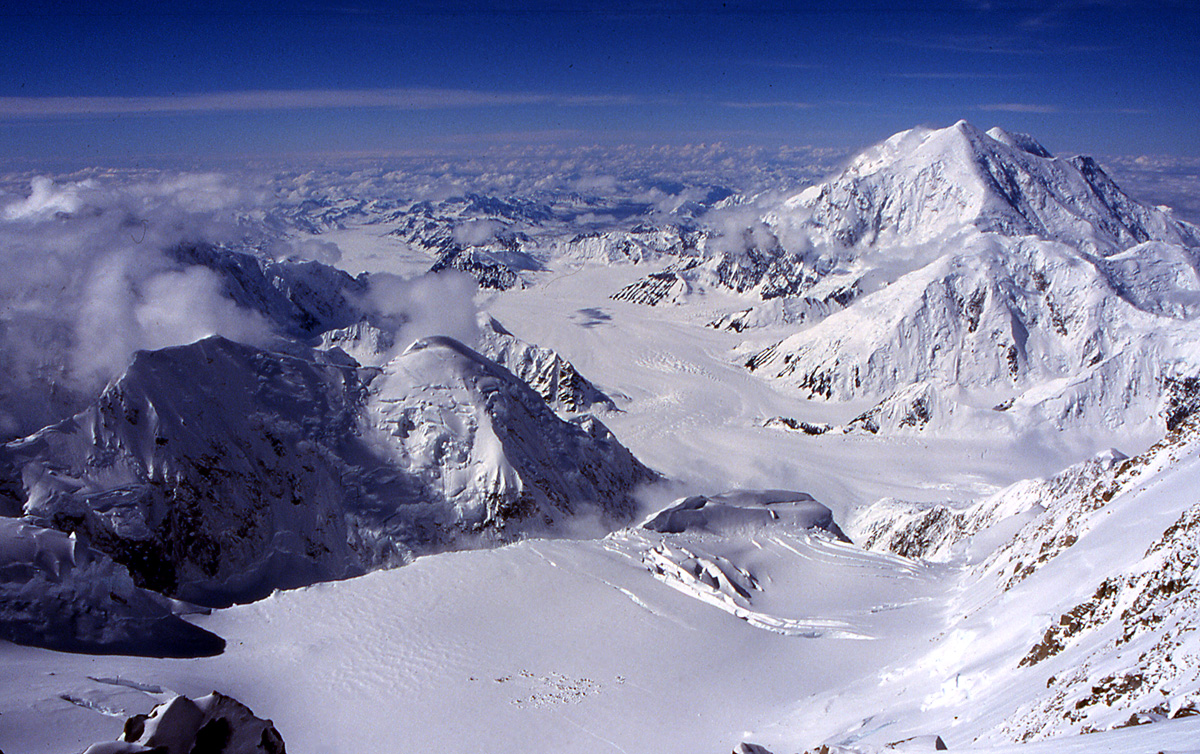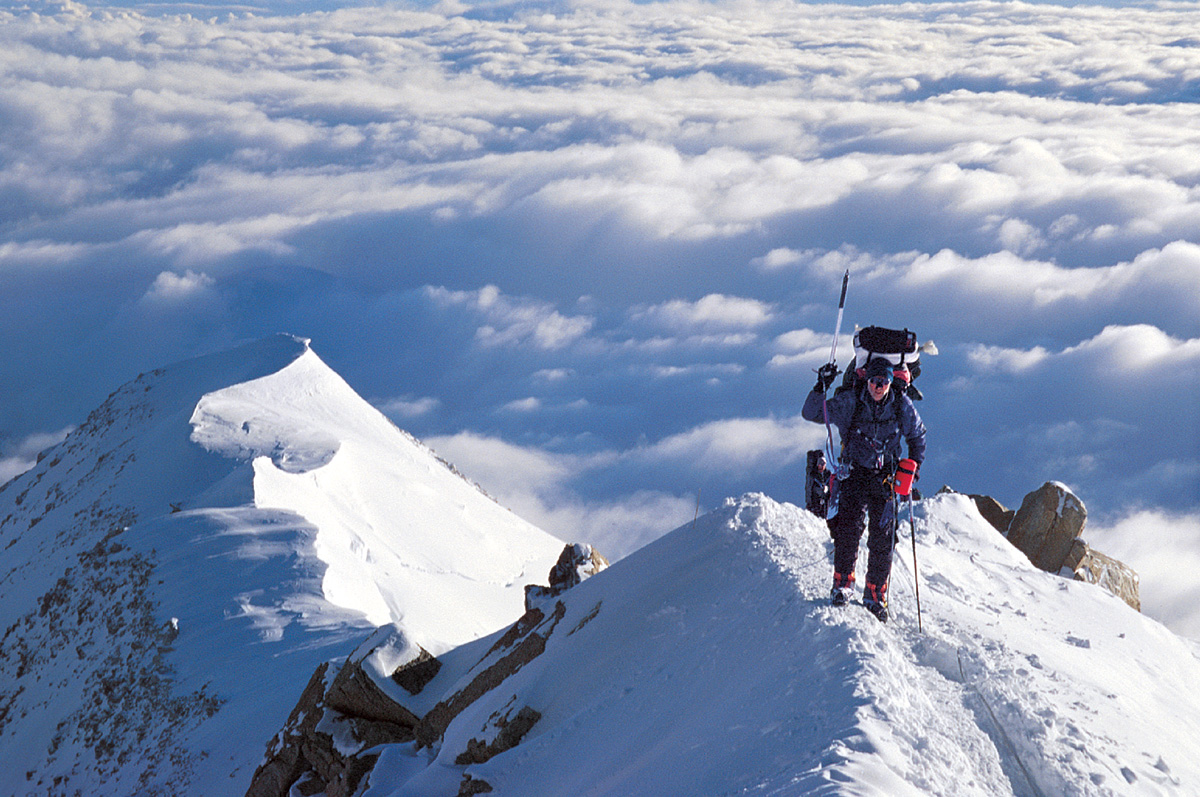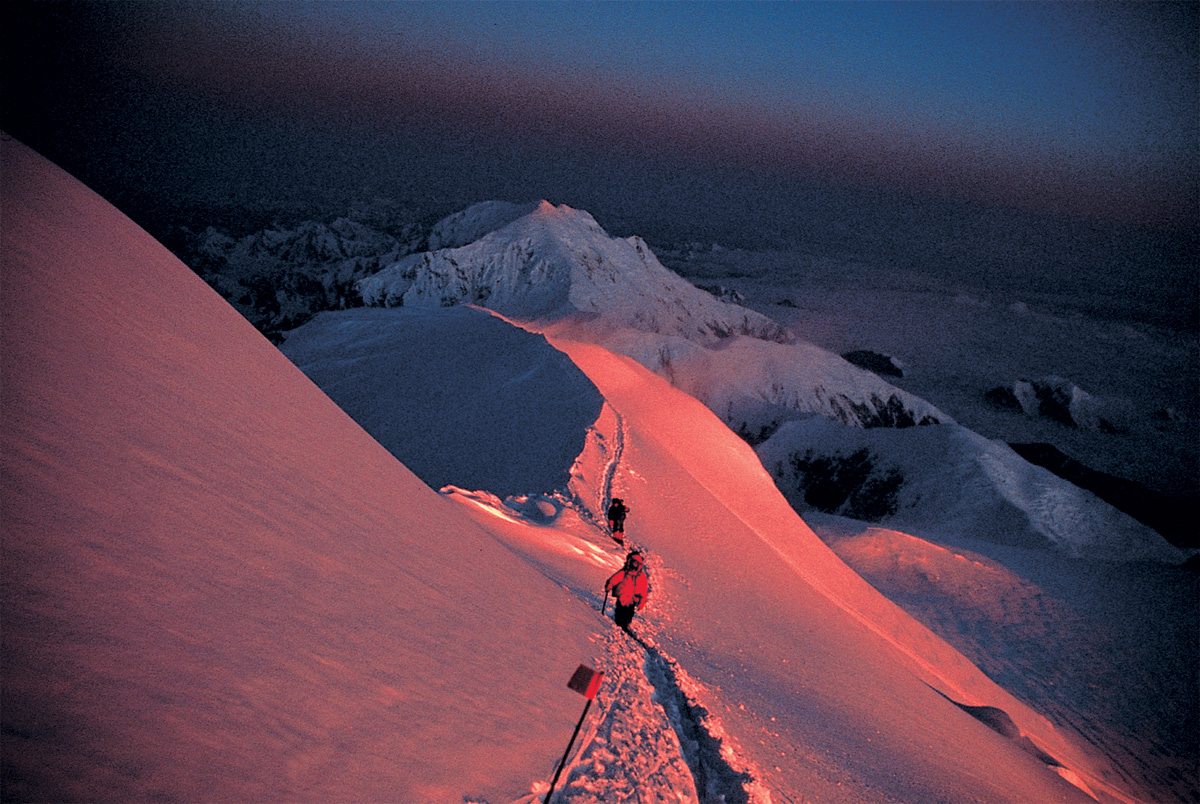Denali (20,310ft/6,190m)
Highest Summit in North America
There are certain mountains that need no explanation as to “Why Climb.” Denali is such a mountain. Its tremendous size and beauty generate a magnetism that continually draws climbers from around the world. An ascent of Denali touches the psyche of all alpinists, and for those who have undertaken its challenges, it rewards them with an unforgettable, once-in-a-lifetime experience.
Start: Anchorage, Alaska
Finish: Anchorage, Alaska
Destination: Denali
Theme: Mountaineering
Physical Rating: 5
Basic Mountaineering Skills Required
About the mountain
The highest Mountain in North America, Denali has always been revered by native Athabascans who inhabit this northern region. The first climbing attempt was made by the Sourdough Expedition (William Taylor and Pete Anderson) utilizing the Muldrow Glacier. They summited the north peak (19,740’) in 1910.
About three years later, in 1913, a team comprised of Archdeacon Hudson Stuck, Robert Tatum, Walter Harper, and Harry Karstens successfully climbed the south peak, reaching the true summit. It was Harper, a native Athabascan, who first stood atop North America. Between 1913 and 1950, there were very few ascents of Denali. The landmark achievement, which opened Denali to a larger group of climbers, was Bradford Washburn’s 1951 expedition, which reached the summit of Denali via the West Buttress. Washburn’s team, using a plane fitted with skis to access the Kahiltna Glacier, pioneered the most popular route on the mountain.
The Climb
A Denali climb begins deep in the heart of the Alaska Range on the Kahiltna Glacier. From the Southeast Fork of the Kahiltna Glacier we begin the climb of Denali’s West Buttress. Base Camp plus five higher camps are established on the mountain. When necessary, the team makes double carries between all camps, except high camp, to ensure proper acclimatization and reduce loads. In each camp we build snow walls for protection from possible high winds. The climb takes approximately 17-18 days round trip from Base and we add an additional four days to allow for inclement weather, acclimatization and optimal summit attempts. The ascent requires intermediate mountaineering skills and is physically and mentally demanding.
Conditions
Denali is a mountain of extreme conditions where a climber may encounter 100-mph winds and minus 40 degree F temperatures. Alternately, some days are quite hot with sunshine lasting up to 20 hours. These low temperatures and sporadic high winds greatly increase the rigors of the climb. Snowstorms are known to last a week at a time. The unpredictable weather coupled with the high altitude requires not only technical snow and cold weather skills, but also endurance and fortitude.
Gallery
Itinerary
Day before your climb begins
Travel to Anchorage and arrive by 4:30 p.m. Climbers must make their own arrangements with a shuttle service and book lodging at the Talkeetna Denali View Lodge near Talkeetna. Please see the Climber Information Package for details.
Day 1
After introductions, orientation, and final gear check, we will board a ski-equipped aircraft and fly to Base Camp on the S.E. Fork of the Kahiltna Glacier (7,300 ft.). The flight to Base Camp is marvelous, presenting outstanding views of a variety of peaks including Mt. Foraker, Mt. Hunter, and the Moose’s Tooth. Upon arrival, the group prepares our Base Camp. (Note: Guides may perform a glacier travel review on this day.)
Day 2
Glacier travel review. We’ll carry gear to our intermediary camp (approximately halfway to the traditional Camp I). This gives us a chance to get an easy start and let you sort out any adjustments in gear and sled-pulling setup. This is important, as we will be pulling sleds for the next eight days.
Day 3
Carry loads to Camp I (7,800 ft.). Snowshoes may be necessary between camps on the lower part of the mountain.
Day 4
Carry loads to cache between 9,800 and 10,000 ft. (Camp II) and return to Camp I. The route this day ascents a slope called “Ski Hill,” which flattens out as we approach Camp II.
Day 5
Our carry today depends on snow/weather conditions and how the group is feeling. We’ll either ascend back to our cache and camp for the night or continue on to 11,200 ft. (Camp III.) Camp III is located in a small cirque at the base of Motorcycle Hill.
Day 6
We’ll carry all our gear to Camp III.
Day 7
We’ll carry half our gear up Motorcycle and Squirrel Hill and then traverse a long gradually rising plateau to Windy Corner. We’ll continue on around this narrow corner for a few hundred yards to make a cache (at approximately 13,500 ft.) and return to Camp III. This day provides stunning panoramic views of the surrounding peaks and the northeast fork of Kahiltna Glacier, 4,000 feet below.
Day 8
Move to Camp IV (14,200 ft.).
Day 9
Descend to our cache at 13,500 ft. and carry to Camp IV. This is an easy day as we’ll descend 700 ft., pick up our gear, and return to Camp IV.
Day 10
We’ll carry loads to 16,500 ft. and return to Camp IV. We’ll ascend 1,100 ft. of moderate snow slopes to reach the beginning of the fixed lines. Using ascenders on the lines to self-belay, we’ll climb the Headwall, which consists of 900 feet of 45–50 degree snow and ice up to the crest of the West Buttress. From there, the climb takes on an entirely different nature with views that fall off in both directions several thousand feet below us.
Day 11
Rest Day at Camp IV.
Day 12
Carry and move to High Camp (Camp V, 17,200 ft.). We’ll again ascend the fixed lines and follow the exposed ridge 600 feet up around Washburn’s Tower, and on to Camp IV, which we establish on a saddle just above the Rescue Gully. It overlooks Camp IV 3,000 feet below.
Day 13
Rest day. Rest and prepare for the summit attempt.
Day 14
Summit day. We traverse across a steep snow face to Denali Pass. From here, we’ll follow gentler slopes to reach Archdeacons Tower and a large plateau at 19,400 ft., known as the “football field.” From the plateau, we’ll ascend moderate terrain to the crest of the summit ridge, where we’ll look down upon the immense 8,000 ft. South Face, with Cassin Ridge and the South Buttress in full view.
Once on the summit ridge, excitement grows as we’ll climb the last 300 feet to the top of North America. From the summit, we’ll have a 360 degree view of the entire Alaska Range, with Mt. Hunter and Mt. Huntington to the south and Mt. Foraker to the west. These peaks, along with scores of others, make this mountain view one of the most impressive in the world. After taking photos, we’ll descend to our High Camp.
Day 17-21
Extra days, for inclement weather, rest and acclimatization as needed.
Please plan to depart from Anchorage the day after your climb ends after 1:30 p.m.
Note: Due to the nature of climbing Denali, there may be delays/accelerations due to weather and guide decision-making. It is important to keep schedules slightly flexible, as we will take extra days or combine days if necessary to give everyone the best possible chance of success. A detailed logistics package will be forwarded to each team member upon receipt of application. Our staff will work closely with all Denali climbers.
Day 15-16
Return to Base Camp. From High Camp, we spend two days returning to Base Camp, where we will board a plane and return to Talkeetna.




